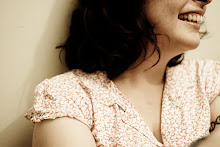the design of everyday things

passei 5 anos da minha vida numa faculdade de design. depois mais 1 em outra. e nunca, eu disse NUNCA, ouvi dizer desse livro.
(não, não foi falta de atenção.)
mas uma vez o vi no amazon e comprei. isso foi em 2002. pois é, eu demorei a começar a ler o coitado. mas é daqueles livros que qdo a gente começa, não consegue parar. terminei hj, rapidinho.
essa minha edição é a primeira, de 1990. ele foi escrito em 88. então tem muita coisa desatualizada. chega a ser engraçado em algumas partes. portanto, não é um livro tão recente a ponto do mundinho acadêmico poder usar essa desculpa para o desconhecimento dele.
eu podia ficar linhas e mais linhas criticando o ensino do design no brasil. mas tô cansada. o que importa é que esse livro deveria ser leitura obrigatória no primeiro período dos cursos de design, especialmente no de produtos.
dois trechinhos pra dar uma noção do que eu estou falando:
um na página 151
If everyday design were ruled by aesthetics, life might be more pleasing to the eye but less comfortable, if ruled by usability, it might be more comfortable but uglier. If cost or ease of manufacture dominated, products might not be attractive, functional, or durable. Clearly, each consideration has it place. Trouble occurs when one dominates all the others.
Designers go astray for several reasons. First, the reward structure of the design community tends to put aesthetics first. Design collection feature prize-winning clocks that are unreadable, alarms that cannot easily be set, can openers that mystify. Second, designers are not typical users. They become so expert in using the object they have designed that they cannot believe that anyone else might have problems; only interaction and testing with actual users throughout the design process can forestall that. Third, designers must please their clients, and the clients may not be the users.”




Nenhum comentário:
Postar um comentário